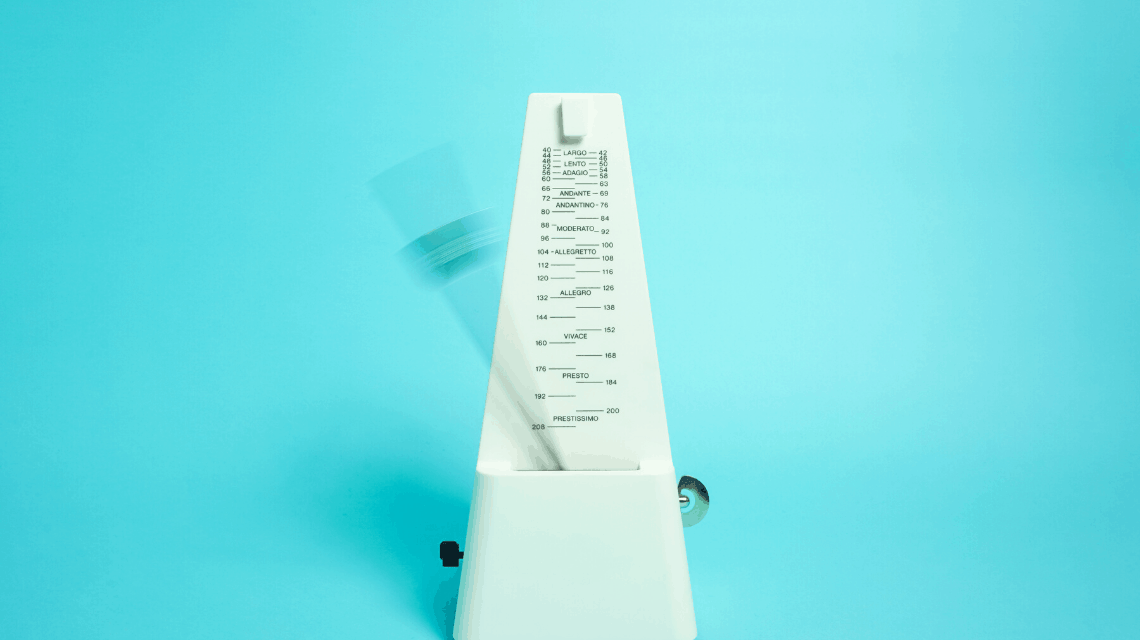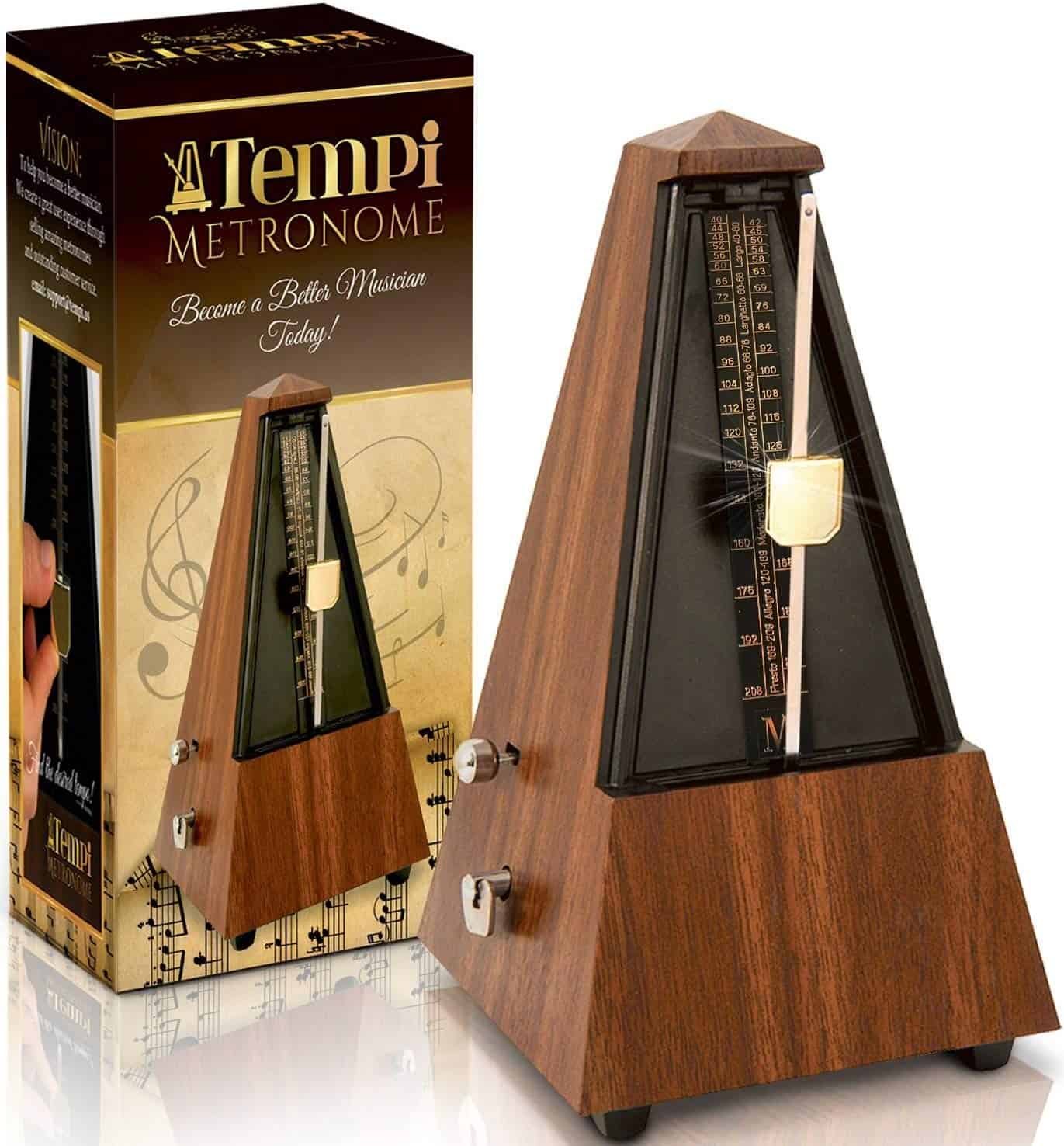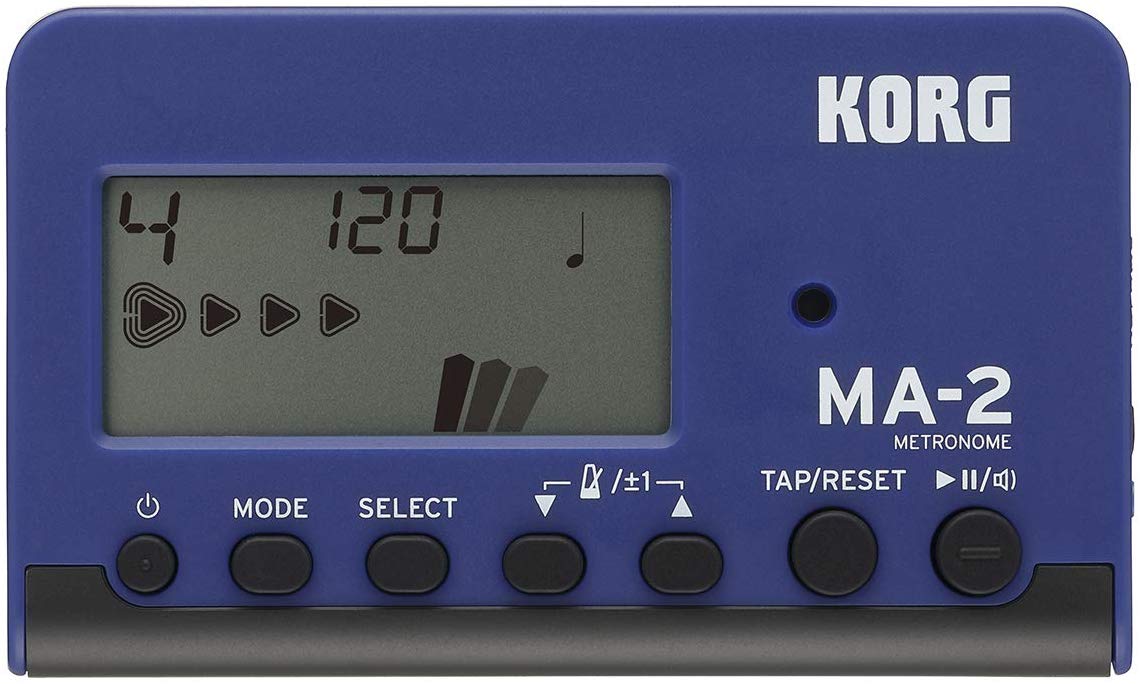How To Use A Metronome
We're here to help you learn how to use a metronome!

Most music instructors recommend including a metronome as part of your daily practice. It's one of the most effective practice techniques, but until you learn how to use a metronome, it may be intimidating.
So, how does a metronome work and where does one start? Musicnotes is here to help you with everything you need to know.
What is a metronome?
A metronome is a device that will help you keep a steady beat. It creates a ticking, clicking or beeping sound at a regular rate. You can select how fast or slow you would like it to go.
Using a metronome is a highly effective way to practice because it forces you to play with rhythmic integrity, thus giving your playing a clean and precise sound. It helps you to develop strength and dexterity in your fingers, allowing you to execute fast notes more evenly and crisply.
However, metronome practice can be really frustrating. Oftentimes, it might feel like the metronome is changing tempo or skipping beats. The metronome doesn’t wait for you to figure out notes, so it can be challenging to play with one in the first stages of learning a new piece. Just like learning your instrument, learning how to practice with a metronome will take time.
What metronome should you use?
Metronomes come in a variety of styles.
You may have seen old-fashioned metronomes like this one:

These metronomes don't require batteries or electricity. You wind it up and the pendulum will swing to sound a steady click. You can change the tempo by sliding the metal weight up or down the pendulum.
There are gradations marked behind the pendulum to help you choose the correct tempo. The number refers to the beats per minute, so the higher the number, the faster the tempo.
Electric metronomes are very common and easy to find online and in music stores. A basic model will have an on/off switch and buttons to move the tempo up or down. More elaborate metronomes will include additional features such as different tones, a built-in tuner, volume control, and other features to help you practice:

If you practice piano on a digital piano or keyboard, it’s very likely that you have a built-in metronome on your instrument. On some keyboards, it may not seem obvious how to change the tempo. Check your user’s manual – it’s likely pretty simple.
One of the simplest ways to use a metronome is to google “metronome.” Google has an on-screen metronome that comes up in a search. You’ll also find a variety of metronome websites you can access. Some are more basic than others, so you can browse until you find one that best meets your needs.
And, since there is an app for almost everything, of course there are metronome apps you can download to your phone or device. Once again, these have a variety of features, so you may want to try a couple out. For example, our free Musicnotes iOS app features a metronome that you can utilize.
Helpful features on different metronomes
As we’ve mentioned, metronomes can have a variety of different features. Most musicians just need the most basic functions – an on/off switch and the ability to change the tempo.
However, sometimes it’s nice to have options. Here are some extras that you might come across:
- Flashing light – Some electric metronomes and metronome apps have a small light that flashes to the beat. (On an app, it might use your phone’s flashlight.) If you are a strong visual learner, you might find it helpful to have this visual component to work with.
- Changing tones – Most metronomes produce a standard clicking sound, but some have a few tones to select from. Sometimes, it will allow you to have a different tone for the downbeat than for the remaining beats in the measure. This will help you ensure that you feel those strongest beats and that you don’t skip beats or lose time as you play.
- Counting – Some metronomes have a computerized voice that will say the counts for you. This is especially helpful if you feel like you’re getting lost or can’t keep up. Hearing the beats aloud will help you make sure that your music is lining up with them correctly.
- Tap – If you need to match the tempo of your piece to a recording, you’ll want to use the tap feature. Simply tap a button in time with the recording, and the metronome will tell you what the tempo is. Then you know what your tempo target is for your own performance.
- Change Meters – For metronomes that have multiple tones, there is sometimes an option to tell the metronome what meter you are playing in. If your downbeat is a different tone than the rest of the measure, you’ll want to be able to set your metronome to different meters. For example, since 4/4 time is most common, it may default to playing beat 1 using one tone and beats 2, 3 and 4 with another. However, if you’re in 3/4 time, you’ll only need to hear beats 2 and 3 of the alternate tone.
- Subdividing – Some metronomes can help you subdivide larger beats into smaller units. For example, if you have a lot of eighth or sixteenth notes, but your pulse is a quarter note, it can click out those smaller notes to help you understand the rhythm. Similar to changing meters, your metronome may use an alternate tone to help you hear where the main beat is and where the subdivided beat goes.
How to practice with a metronome
The clicks on a metronome are measured in Beats Per Minute or BPM. Therefore, 60 BPM is equal to one beat for every second.
If you’re not sure how to get started using your metronome, here are some techniques to try:
- Use your metronome to internalize the beat. The ultimate purpose of a metronome is to help you feel a consistent beat. This is definitely something that can be learned, so if you don’t feel like you have a strong inner pulse or sense of rhythm, spend time with your metronome away from your instrument. Take a couple of minutes in each practice session to listen to and feel the steady beat. Find a way to move to that beat, whether you’re clapping your hands, tapping your foot or nodding your head. The more you do this, the more it will become second nature and the more you will naturally feel the beat and be able to play with a metronome.
- Start slow and move towards your final tempo. A lot of people assume that most practice should be happening at the target tempo, but most professional musicians will tell you that they spend much of their practice time at a slower tempo. If you’re trying to work your music up to a fast tempo that feels unachievable, the metronome is exactly what will help you. For example, if you’re aiming to play at 120 BPM, set your metronome to 60 BPM. Stay at 60 BPM until you are comfortable playing consistently and accurately. Once 60 BPM feels comfortable, bump up the metronome just 2-4 BPM at a time. Stay at your new slightly higher tempo once again until you feel confident. Continuing increasing the tempo by no more than 4 BPM. You will barely notice the increase in tempo, but over time you will train yourself to play at a faster tempo with precision and a strong technique. It will likely take you several practice sessions to reach your final tempo, but this is a solid approach to learning how to play faster and accurately.
- Subdivide difficult rhythms. Most modern music is based on one beat per quarter note, but sometimes this isn’t the best way to practice with a metronome. Try subdividing the beat to a smaller unit. For example, if you’re having trouble lining up quarter notes to 60 BPM, you could set your metronome to 120 BPM and feel an eighth note pulse. This approach is especially helpful if you’re working on a piece with a slower tempo. Sometimes it can be difficult to internalize a very slow beat, but doubling the beat and feeling a smaller unit of notes is more doable at first.
- Clap or tap along with the metronome to practice coordination. There’s a lot to think about when practicing an instrument. To simplify things, it can be helpful to focus solely on rhythm without worrying about pitch and technique. Clapping or tapping your notes along with the metronome can help you coordinate the timing of your hands to help everything fall into place when you return to your instrument.
- Practice scales and simple exercises with a metronome. It can be tempting to rush through scales and technique exercises, but practicing with a metronome will really help your progress in other areas. Practicing scales with the metronome will help you maintain a clear and consistent tone. Plus, it gives you more practice feeling the musical pulse. This will make your metronome work on more complex music come more easily.
Practicing with the metronome should be a part of your daily practice routine, but only a part. Use the metronome with your scales and etude warm-ups, and for tricky passages you are spot-practicing. Then turn it off and spend the rest of your practice session working on artistry and expressive content.
Now that you know how to use a metronome, give it a try! It might not come easily at first, but be consistent and over time you'll start to see the benefits.
This post was written by Megan, piano teacher and author of Pianissimo: A Very Piano Blog. Visit her website for more piano related blogs for teachers, parents, students, and all things piano.
FAQ
- Should beginners practice with a metronome? Absolutely! Beginning pianists can follow the same steps above. By doing so they will develop excellent rhythm right at the start.
- Why is it hard to practice with a metronome? It’s hard because most of us are sloppy with our rhythm and counting at first. The more you play with it, the better you become and the easier it gets.
- Should you sing to a metronome? You can sing to a metronome if you are doing solfege work or vocal exercises. Otherwise singing to a metronome is counterproductive.
- When was the metronome invented? The metronome was invented in the 19th century by the Dutchman Dietrstrongkolaus Winkel. However, it was the German organ builder Johann Nepomuk Maelzel who became famously associated with it. This was due to his becoming a metronome manufacturer in Paris in 1816.
- What does M.M. mean? The metronome mark you often see at the beginning of pieces, e.g. M.M. 60, stands for Maelzel’s metronome. Beethoven was one of the first composers to begin using this mark in his scores. He became a big supporter of using a metronome for music and encouraged its use among his peers.
- Set your metronome at 60 BPM. Play the C major scale in quarter notes for one octave, eighth notes for two octaves, and if your instrument will allow it, play triplets for three octaves. Pianists can continue to sixteenth notes for four octaves.
- Still with your metronome set at 60, play the same scale patterns for all three versions of C minor; natural, harmonic, and melodic.
- Now move your metronome up a couple of notches. On a traditional pendulum-style metronome, that means you are now at 66 BPM. On a digital metronome, you can choose something between 64 and 66.
- Play the D major scale as outlined above, for however many octaves your instrument can do. Then play all three D minor scales the same way.
- Move the metronome another couple of notches and play the E major and E minor scales.
- Continue in this way, through the white key scales, until your scales start to get sloppy and you can no longer hold them together. Let’s say you started to get sloppy around 92 BPM. When you practice tomorrow, you will start a couple of notches back from 92, for example, 84 BPM.
- Do this each day you practice and you will see a dramatic increase in your ability to play fast notes cleanly.

